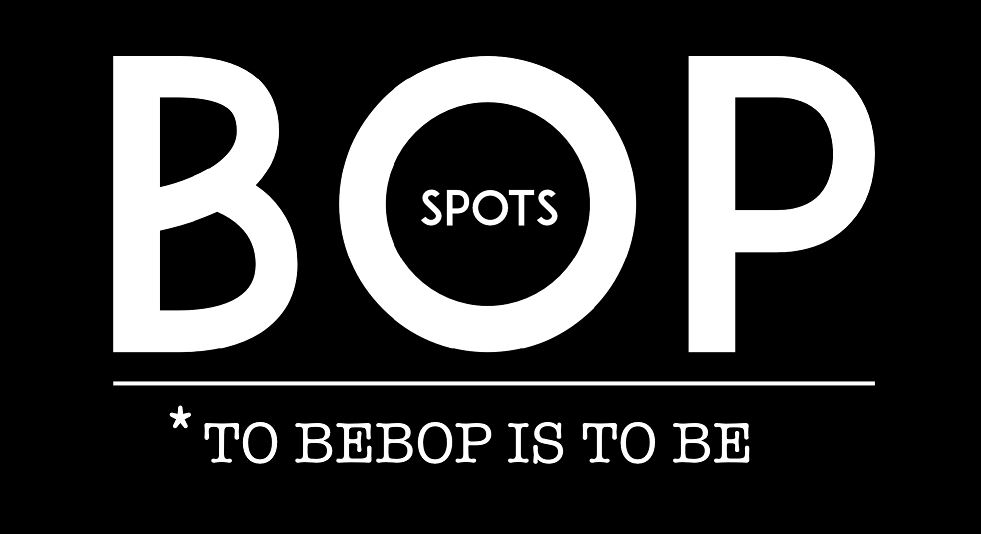
By: Estefanía Romero
Photos by: Cara Macnally y Russell Burden.
Paul Cheneour has been listed among the 100 best flautists of the recording history under the criteria of improvisation, influence, originality, versatility and impact in modern jazz.
In a career over 50 years, this composer from London has built up his own voice through Arab, Indian, Classical, other fusions, and Jazz, within the mantra “Listen, observe, feel and do”, thus changing the qualities of improvisation into what he calls spontaneous composition.
I will say no more, Paul speaks better about everything that makes his style unique…
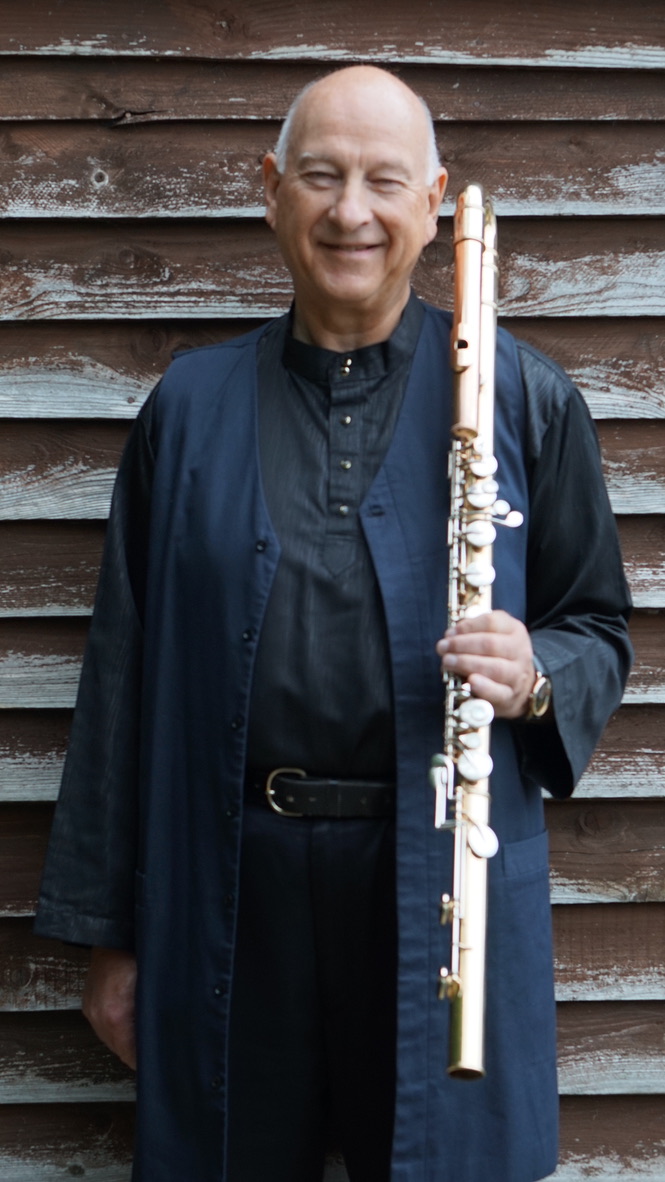
E: I am amazed by all the textures and all the possibilities you find with your instrument. You mentioned in your biography that you started your journey in the 60’s. How is it going now? Artistically speaking.
P: I am able now to start doing what I was thinking of doing back in the 60’s. I knew when I started playing the flute that this is what I’ll be doing now. Bizarrely. I am actually doing what I intended to do. The activities that are coming in this moment are coming all the time. I’ve been getting opportunities now that I’ve been working on the whole of my life.
E: What were you envisioning back at the time?
P: At the beginning, it was very strange. A guy came, a friend of mine. Said: “why don’t you just try the flute?”. Because I played the piano and guitar as well. He said: “try to play the flute”. And, this is not an exaggeration, as soon as I did it, I thought “I’ve done this before” and literally within three months I was in a band, six months later I was on tour playing jazz.
When I was 11 years old, I discovered Charlie Parker and Ravi Shankar on the same week, and for the rest of my life I’ve been putting this East-West thing together, which you can hear in the pieces that I put out in the moment, especially the Silhouettes, you can hear this cross between Indian, Jazz, Arab, Classical European and so on, but without a delineation, it meshes everything together. That’s what I’ve been trying to do and I seem to be able to do it now much better than before.
E: I was trying to visualize the 60’s, the context you were in, now you’re mentioning Ravi Shankar and Charlie Parker. I think Europe has always have a more inclusive vision of these kind of artists, than America.
P: When the American musicians came to Europe they were treated with respect. Whereas in America they were not. Their culture is so strong in the subculture of America.
E: Back in the 60’s, in Mexico it was very difficult to get jazz albums, you had to travel or have money. This was something new, I mean, this is something that now we can look back and “process”… but back then… What was the click with you and that music? How did you fall in love? How did you know?
P: When I was a really small person. My father had lots of 78rpm records and it was all blues, Blind Lemon Jefferson, Sonny Boy Williamson… all of this stuff, and that’s the music I knew I didn’t know any different. That’s jazz, blues music, what I grew up with.
As soon as I had Charlie Parker play, it was like they were speaking straight to me. It was bypassing my brain. As soon as I heard it was like: “I know what you’re talking about!” Because I love the chromaticism Charlie Parker created within jazz because it comes out from tonal scales he was introducing, which is rather like Mozart who introduced chromaticism into classical music. That’s what Charlie did within jazz, with 7ths and 9ths, 13ths, 15ths, 17ths, he was floating over the top of sort of I, III, VI, V, VI, VII, VIII chords, he was playing… I felt it like “yes, of course! That’s how you play!”.
When I heard Ravi Shankar playing it was also like, “of course! I understand that!”. It’s so within my resonance, yes! Then you have to ask where does this come from? Where does this musical recognition come from? There are two things: it comes from being exposed to it, here in radio and TV, we were exposed to it, but now sadly it’s not mainstream; but also, the soul recognition, the fact that I feel I have been exposed to it in a past life situation perhaps many past lives; I think that’s what I was bringing to it. These two stylistic things were coming together in my playing.
E: Now that you mention your past lives, I was listening to your meditation album. This is something that I must ask: what is the link from your perspective between music and meditation?
P: For me music is a meditation. Creating it is a meditation, listening to it it’s a meditation. The physical part of actually creating sound is the vehicle, and underneath that vehicle is the intention, and the intention comes from here (he touched his heart). There’re two facets of playing this way now. One is that I thought I was plugging to the sky, or the collective unconscious if you’d like, and I got out of the way, my personality gets out of the way, and I just let the music come through me via the flute. Until recently that still happens, but now the process has developed, and since I have been doing it for so long, the music is coming from me, 99 percent of the time, rather than me getting out of the way.
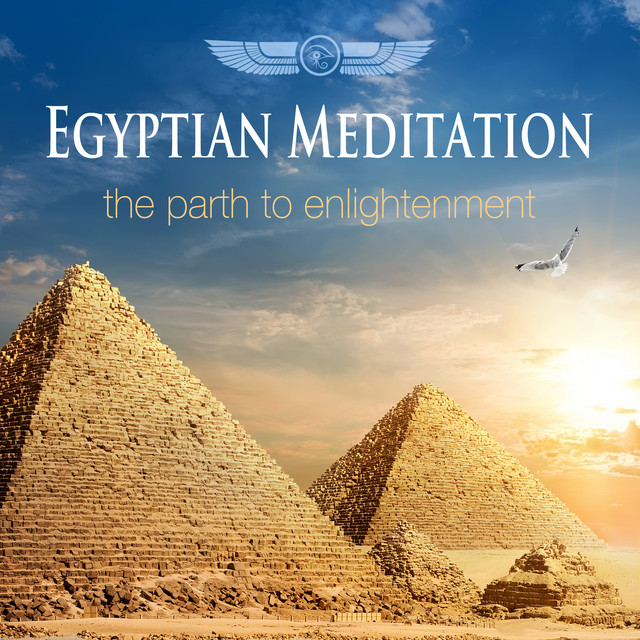
E: Amazing.
P: It’s spontaneous composition. It’s not improvising, which is different because when you are improvising, like in jazz improvisation or classical theme and variations, you’ve got something set and you’re developing and developing, embellishing the idea and creating another piece out of all that. The difference is, I start somewhere, and it goes through to a middle and has an ending, it’s through composed, very different from jazz. Although it is jazz and it’s not jazz.
E: I think it makes complete sense to put a name to It because it’s different to having a scheme of working and an actual structure. Now that you’re making it a concept that I can visualize, I think that if most of the musicians could do that it would make more sense.
P: Exactly. The point is that it has a structure and an architecture all of its own. And you must trust that everything is going to be perfect because, well, it is. It also has to stand up alongside considered music. The next part of the process when I’m recording it and so on, is to actually sit there and consider the pieces carefully and ask myself “does this make sense musically? Does this music stand up to my musical scrutiny, like if I had actually sat down and worked on it?”. This music has to be as equally structured and equally as poignant as the music you spent hours and hours and hours painstakingly considering.
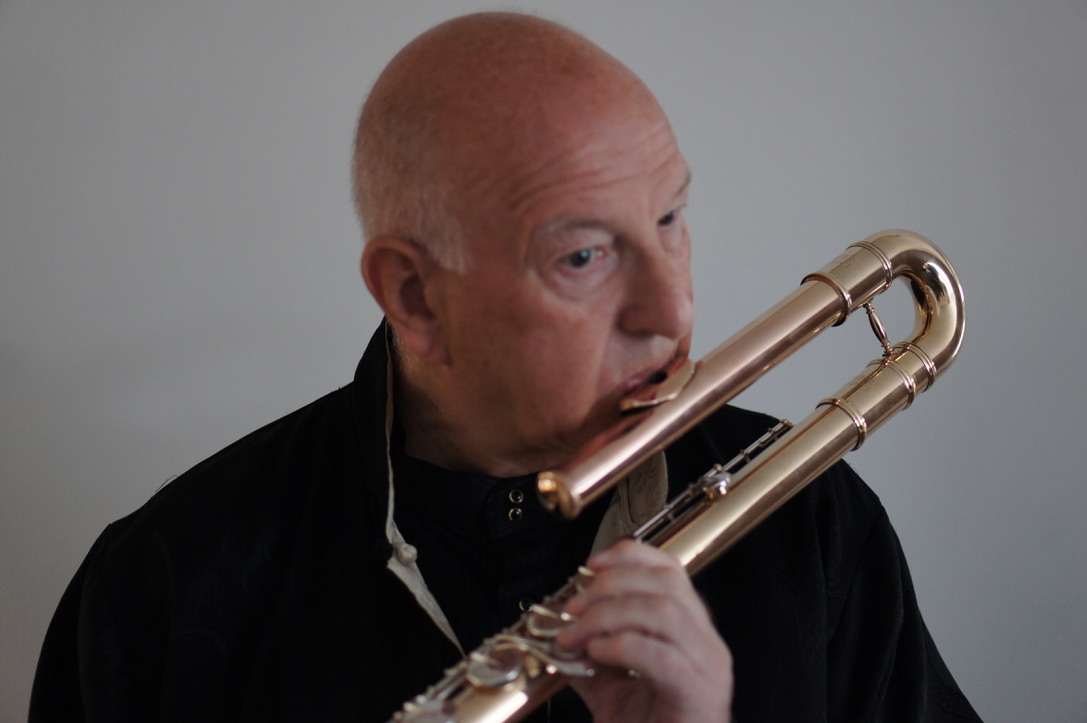
E: Like a meditation.
P: Therefore, the meditation aspect is so important. I’ll refer you to the spiritual idea of. In the left hand everything is chaos and crazy and out of kilter and doesn’t make any sense and it’s all basically shit. On the other hand, the Universe is in perfect order, everything is in the right place, everything is as it is and is as should be, as it happens, and it is perfect. So, you are holding these two paradoxically opposing ideas at the same time and as you hold them you walk through the center of both.
E: It really takes a lot of time and things. After 50 years playing maybe you could put on words how you find your own voice through an instrument…
P: Strangely enough, I started out with my own voice and then, because I went to the Guildhall School of Music in London who tried to make me conform to one way of playing which I just thought was too rigid, they insisted I play European Classical Music in the right style and, as a jazz player, it was easy to fake it because it’s a style and that’s all it is. European Classical Music is a style, and is small style although it’s broadcasted around the world, and everybody judges music by that particular example. I mean, jazz music is a huge style and it’s phenomenal around the world. Arab music is huge. European orchestras grew out of Arab music. Irish music and Indian music are also enormous, and you’ve got Japanese music; Brazilian music. You’ve also got Chinese music. You’ve got Cuban music which flute is the folkloric element of it. The essence or basis of most music is flutes and drums, and flute is at the center.
The flute voice that I have is because of these influences that I already had. I started playing from the creative point of view “I want to sound like that”, a voice that’s within me. What I’ve done over the years is allow that voice to become mature. It’s just experimentation all the time, find techniques to express, accents, there’s a lot of analytical thinking. That comes from the ear but also from here (Paul points out his heart). And it’s not only that, but also got to be on piccolo, concert flute, alto flute, bass, Chinese flute… yeah, lots of other flutes. The beauty about playing is that it is endless.
E: It’s funny how jazz musicians are always going against biology. The natural thing for man is to be afraid of the new, and you’re always searching for the new and always being amazed by it. That is how we should be guided by everything.
P: Absolutely. Nothing is in a box! Get out of the box! It keeps you fresh, it inspires you from an imagination and intuition point of view.
E: Paul! One thing that made me think: “Paul is going to be my friend!”, was when I read that you were inspired, among all those beautiful things, also by Monty Python and The Hitchhiker’s Guide to the Galaxy, because those are my favorites.
P: I think that everything is funny anyway. I love the theatre of the absurd and I love that sort of paradoxical craziness of everything because it is crazy. The reality that we see around us is an illusion and once you can see through the illusion of it, then what people do is bonkers and insane. If you could then laugh at all of that and incorporate it in what you’re doing, then is just wonderful. Monty Python was social observation, absurd and just presenting us with the stupidity and craziness of ourselves. And The Hitchhiker’s Guide to the Galaxy has so much truth in it.
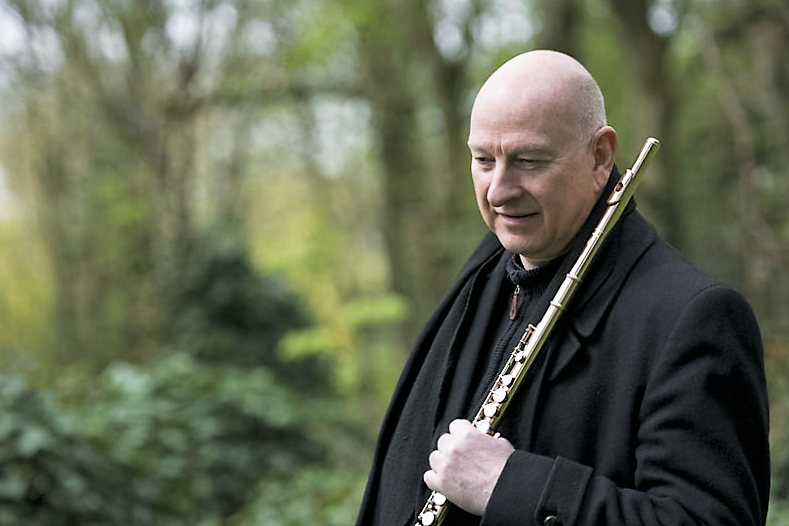
E: 42, right? [internal joke for those who’ve read The Hitchhiker’s Guide to the Galaxy]. I guess this is why your personal mantra is “Listen, observe, feel and do”, right?
P: When I go to another country, I’m hyper aware of everything because I experience all the new things like a hyperreality and I’m hypersensitive of the newness of everything and what I’m trying to do within my playing is to keep that sense alive always.
E: What is the most fun part of your career?
P: The best part of all of it is the path of discovery. All the way through, when I’m playing with people and when I’m teaching. Don’t tell them, but I don’t really teach. What I do is point people in the direction of themselves so they can be responsible for their own learning. I just tell them “have you thought about this? Have you thought about that?”. I just tell them about my observations. “Maybe try this”, “Maybe try that”, because eventually you’re going to discover something for yourself. Without that you’re not going to learn anything.
E: You’ve had a lot of collaborations. Could you mention a few that you’ve enjoyed the most?
P: Everything! They’ve all been amazing because it’s like every collaboration is part of a painting that I’m doing and whether is Arab, Indian, Classical Music, jazz, all of it, I just think they are bringing aspects of myself to me. But I can say that the Seven Changes band, when I was in Mexico, was probably the best band I’ve been in. With Oscar González, Ariel López, Roger Nuncio, Hernán González, the five of us, that was magical time.
E: How could you describe the music you were doing back then?
P: CuBritMex.
E: I am pretty Oscar would have loved to hear that.
P: Oscar was one of the most wonderful, bizarre and crazy persons that I have ever met… he just happened to be a guitarist but also an amazing musician and an amazing person, but then so was everybody else in the band. It was an extraordinary meeting for the five of us. One of the most satisfying groups of people I’ve ever worked with.
E: It makes me emotional. We all miss Oscar very much. How are you feeling about being part of the Festival de Jazz Nuevo León 2021?
P: Fabuloso. My whole time in Mexico was fantastic. I loved being there and I would be there now if we were allowed to travel if it was not for this dreadful pandemic situation. But fortunately, next year I will be there!
E: What are you working on right now that you’d like to share?
P: Whereness. This is an album with Ansuman Biswas (tabla percussion, waterphone, vocals, strings) who is an amazing player from Bangladesh, we have Alistair Zaldua (electric violin) and Maureen Wolloshin (oboe and cor anglais). It’s on all the platforms.
My friend Annie Carford is making videos of every track. If you go into my YouTube channel, you’ll see the Whereness tracks that she’s done so far. When we complete it we are going to present every track in an entire video as a complete show in itself in ceremonies and everywhere else.
Also, Tingbao is a podcast that is being released on the 1st of October in China, and Dreamsailors is a show that we’re doing here live. There are so many projects I’m working on. I also do music for television and work with the composer Dominik Scherrer we recently did a TV show series called The Serpent, on BBC & Netflix.
E: Is there anything that you’d like to add to this conversation?
P: It’s been a huge pleasure and a delight to share what I’m doing with you and all the people from Mexico. Just keep on keeping on, celebrating the memory of Oscar as much as we can. Roger’s Inner Silence Project also come from a project that Oscar and I did with Rogelio, because he added the whole percussions. Now he’s taken on and developed that project. I’m delighted to be working and that everybody is doing what they’re doing. Viva!
